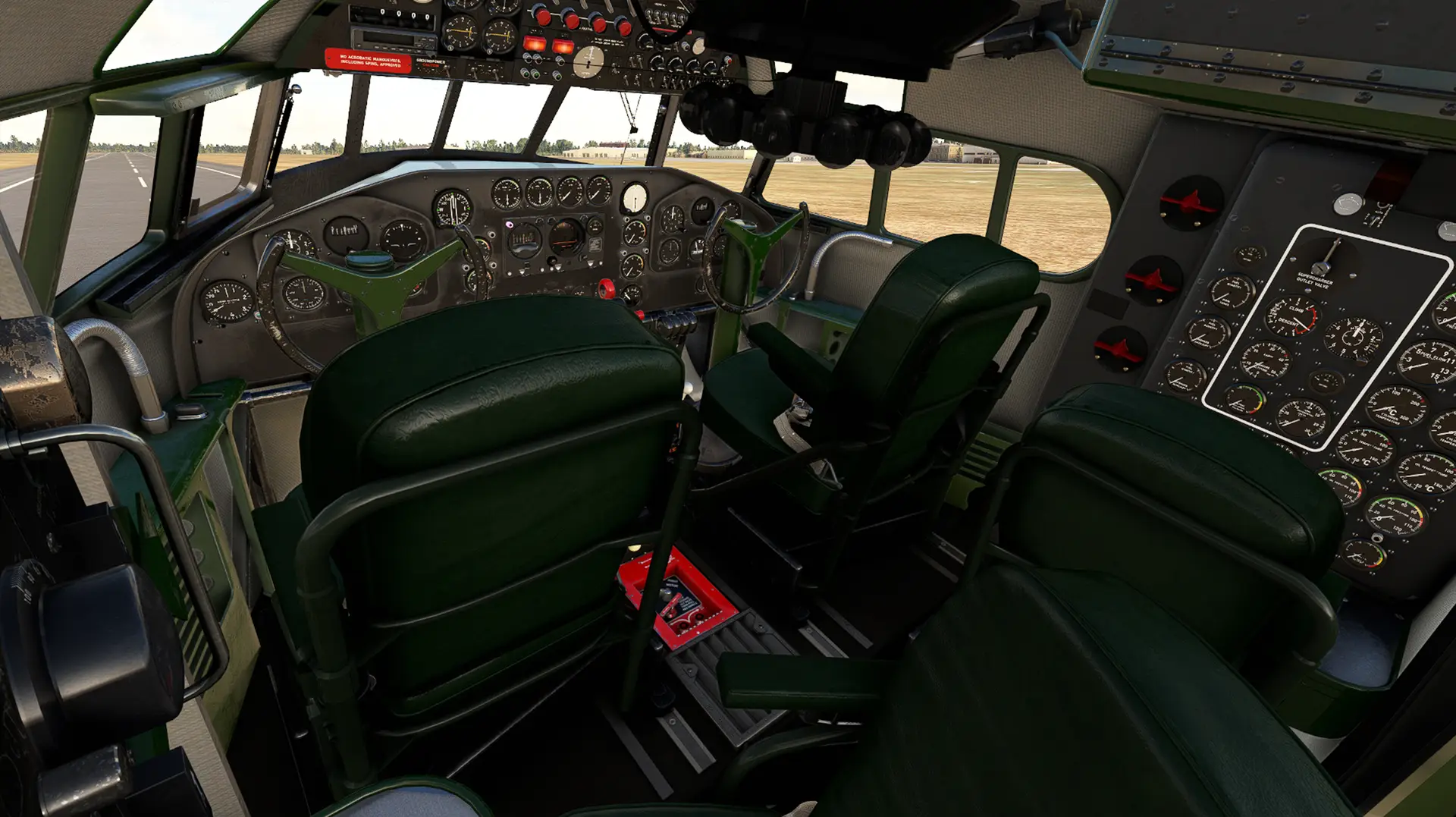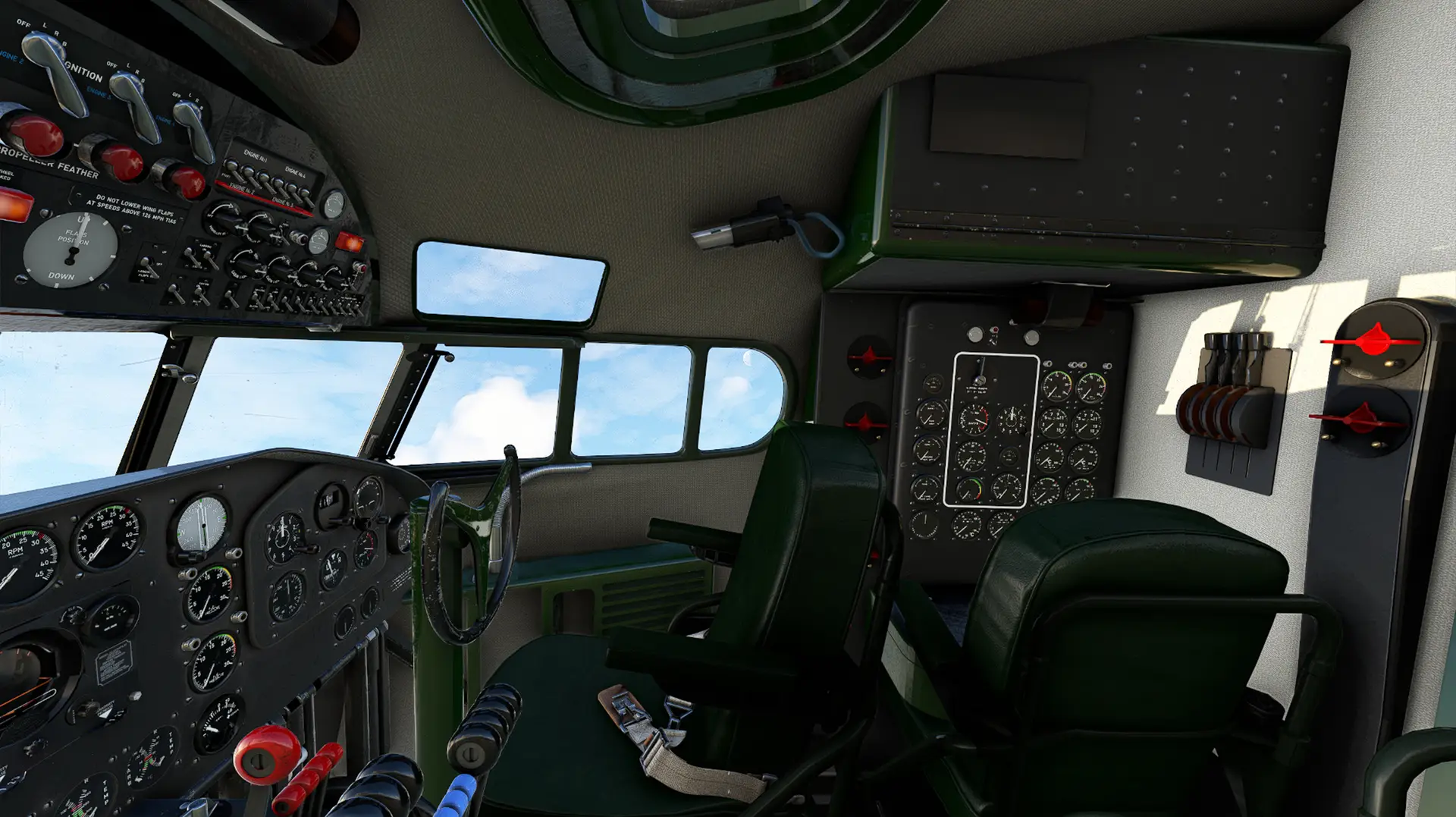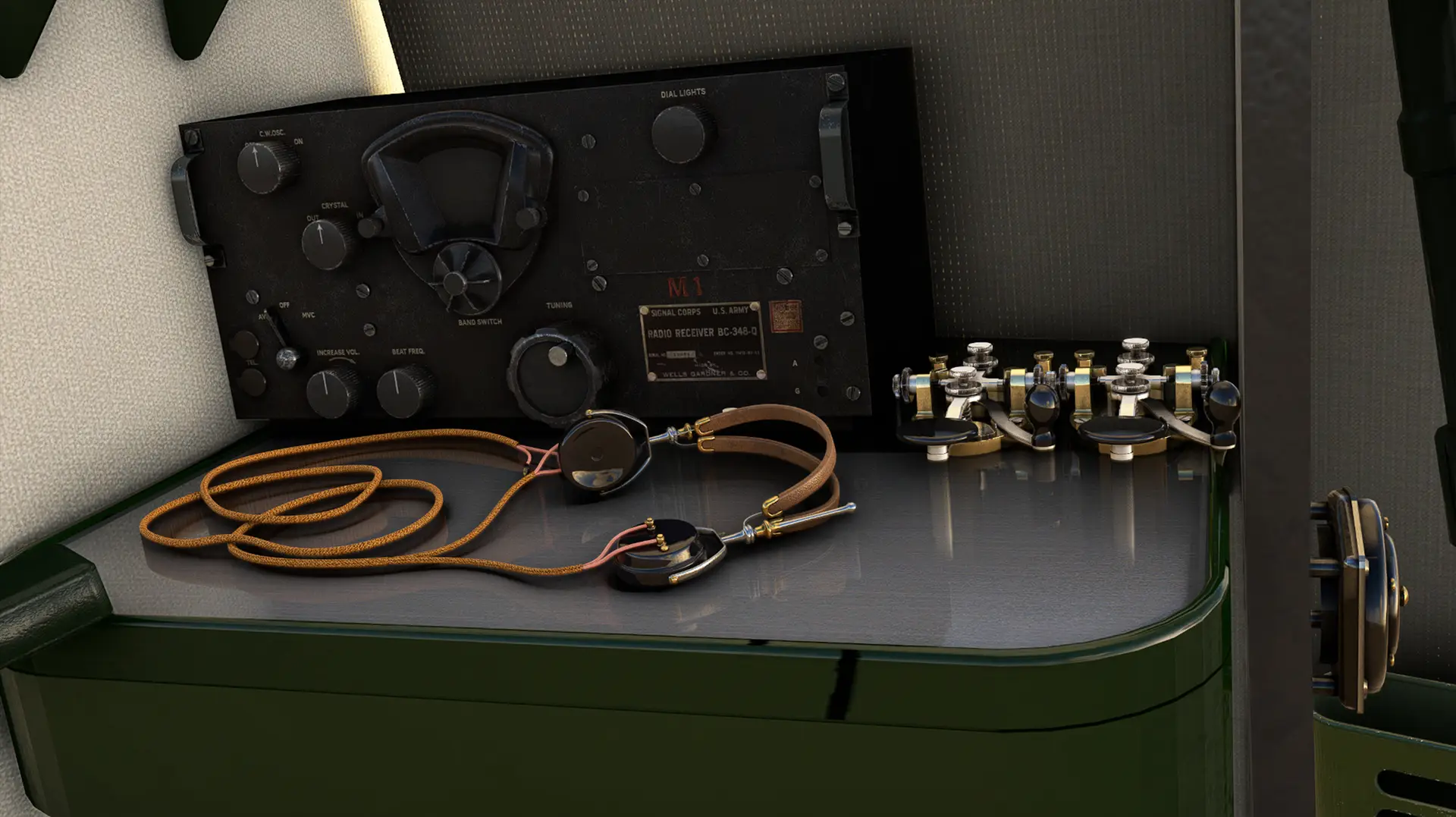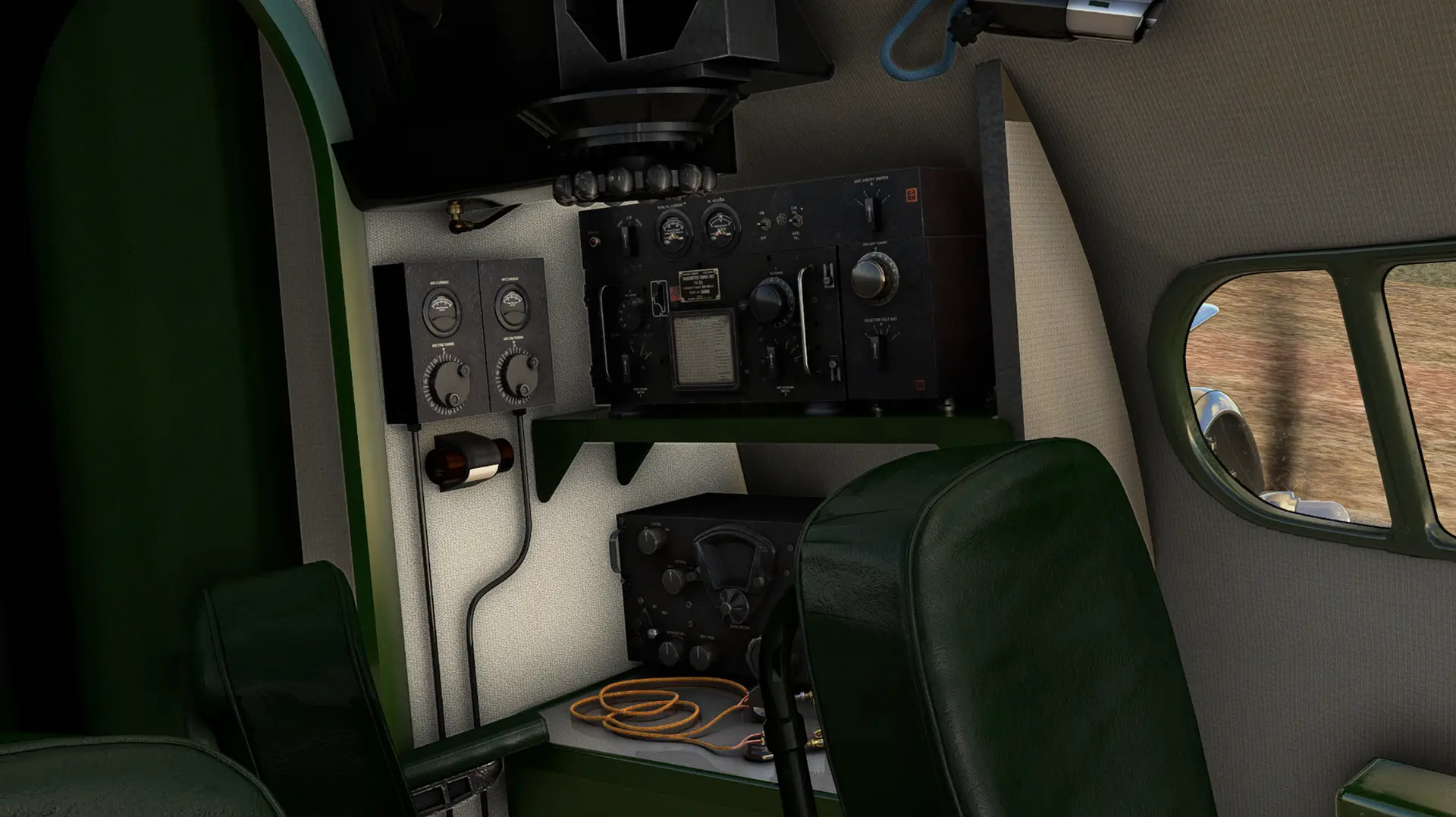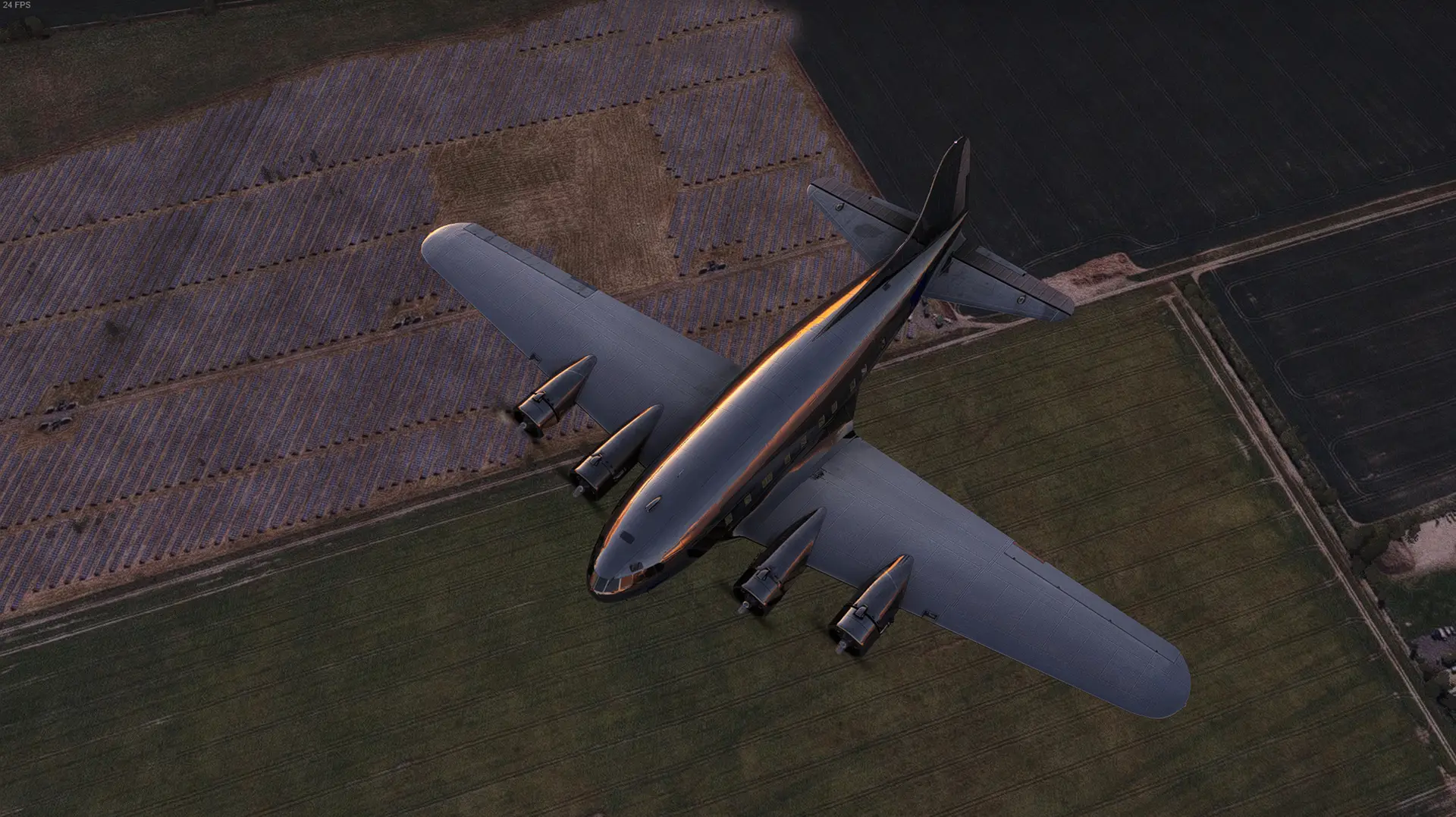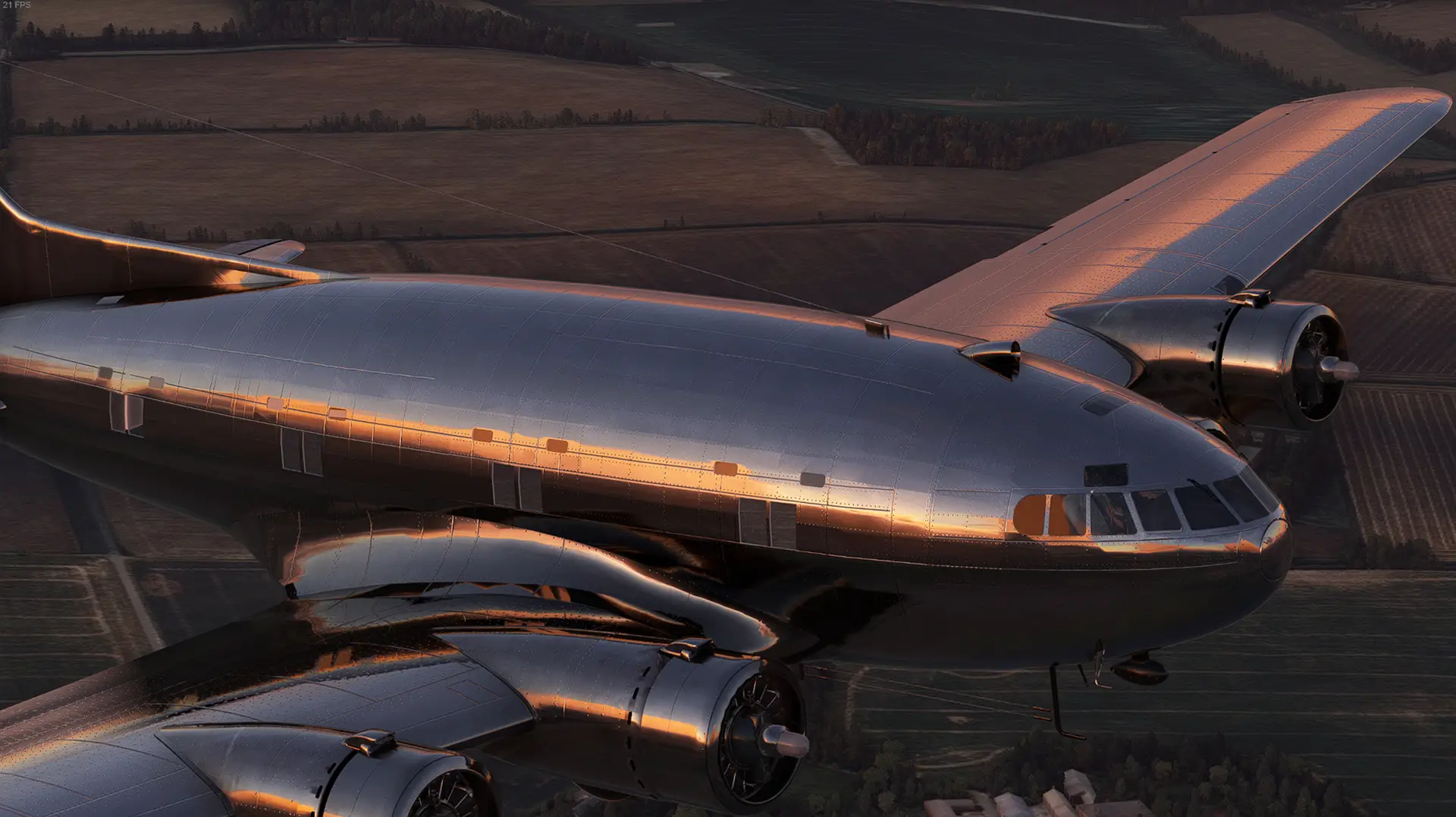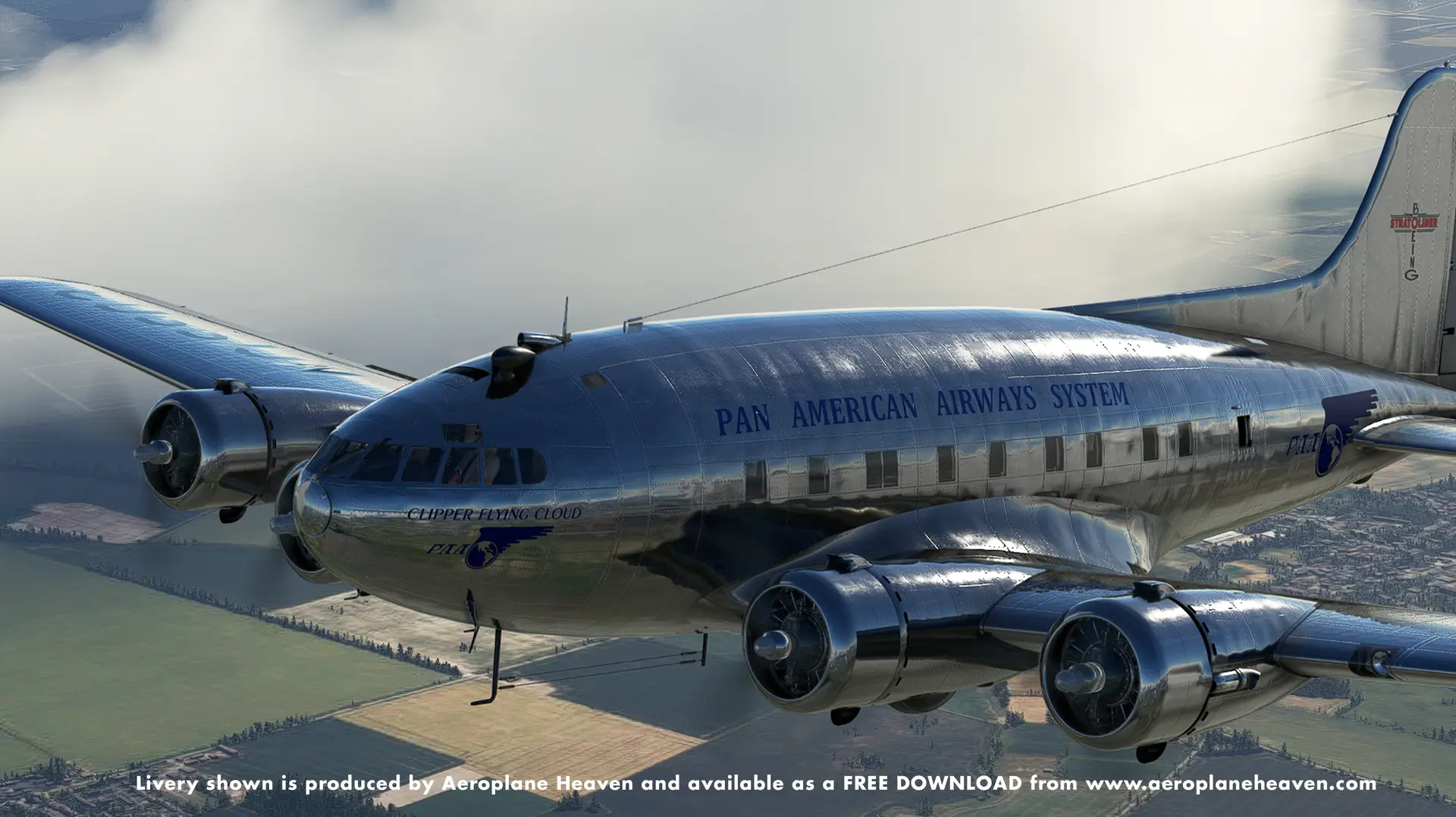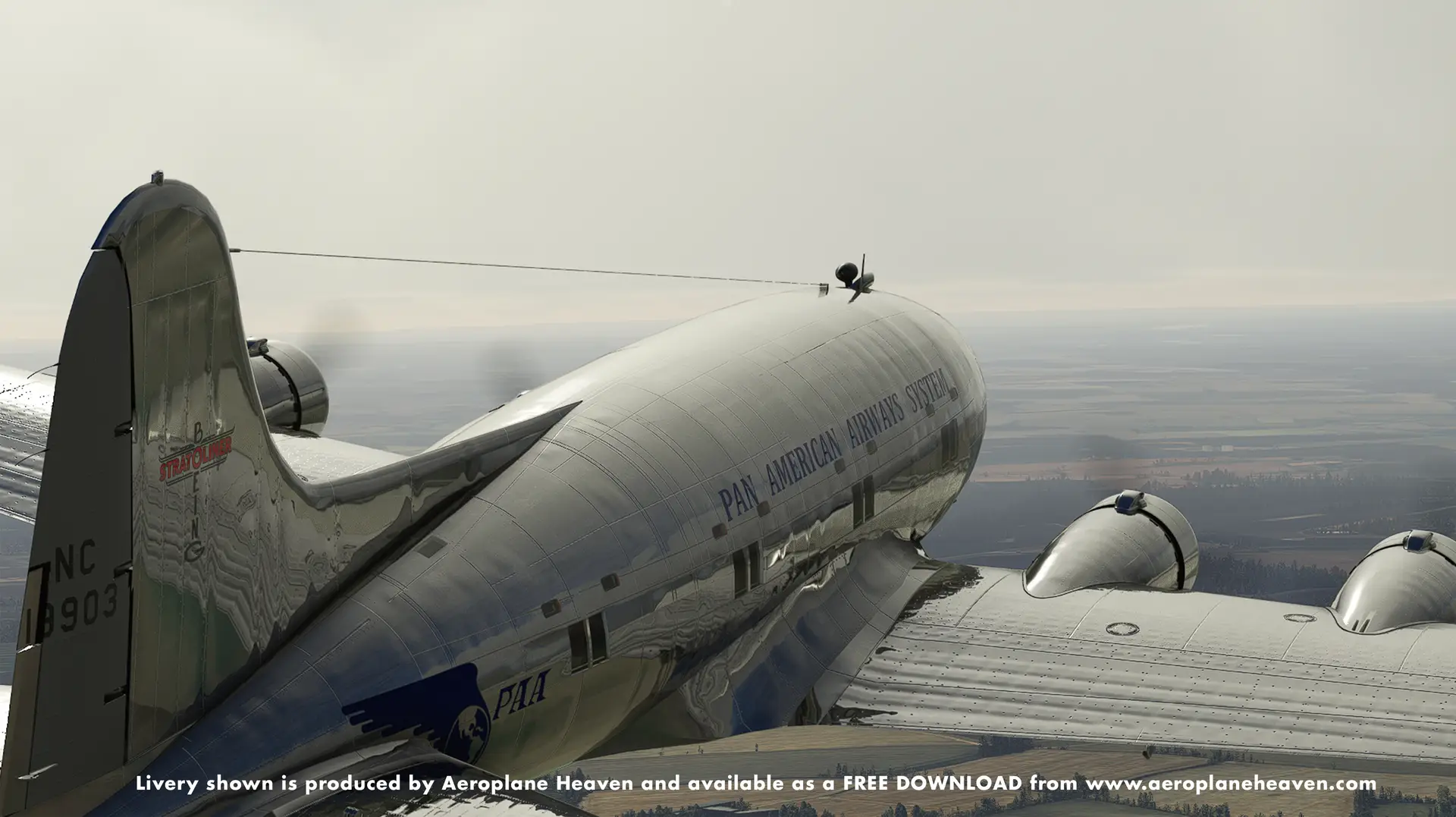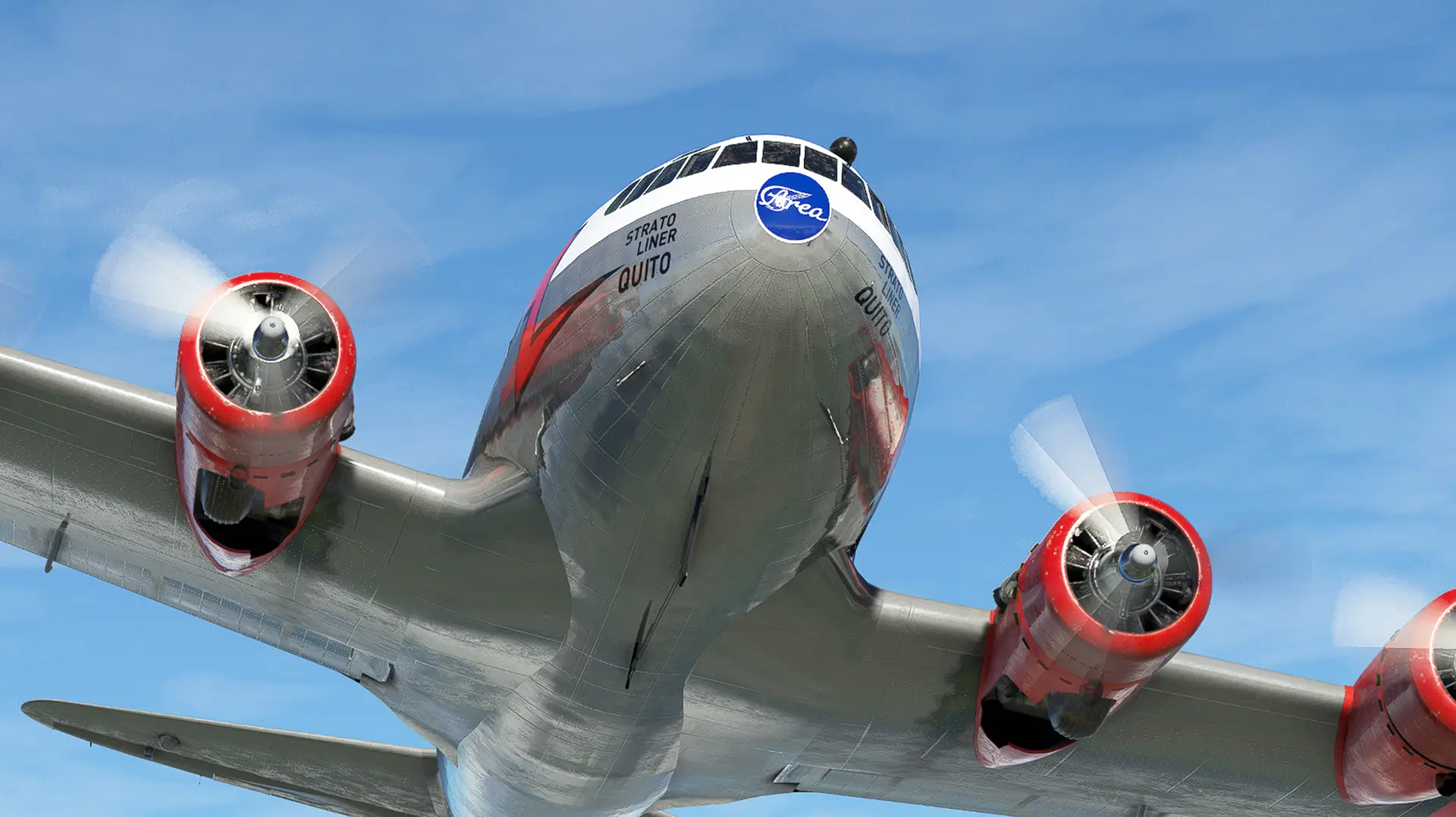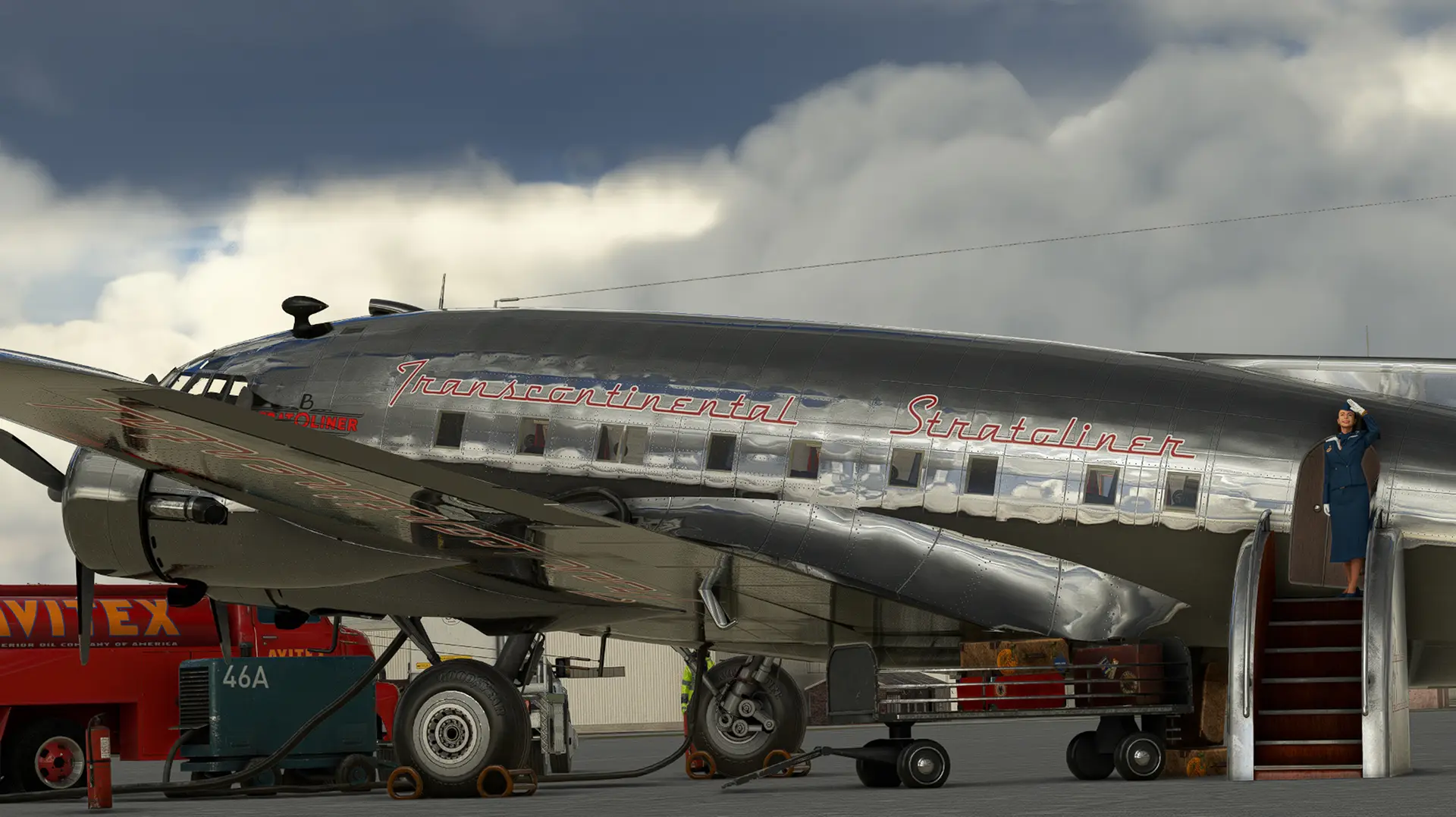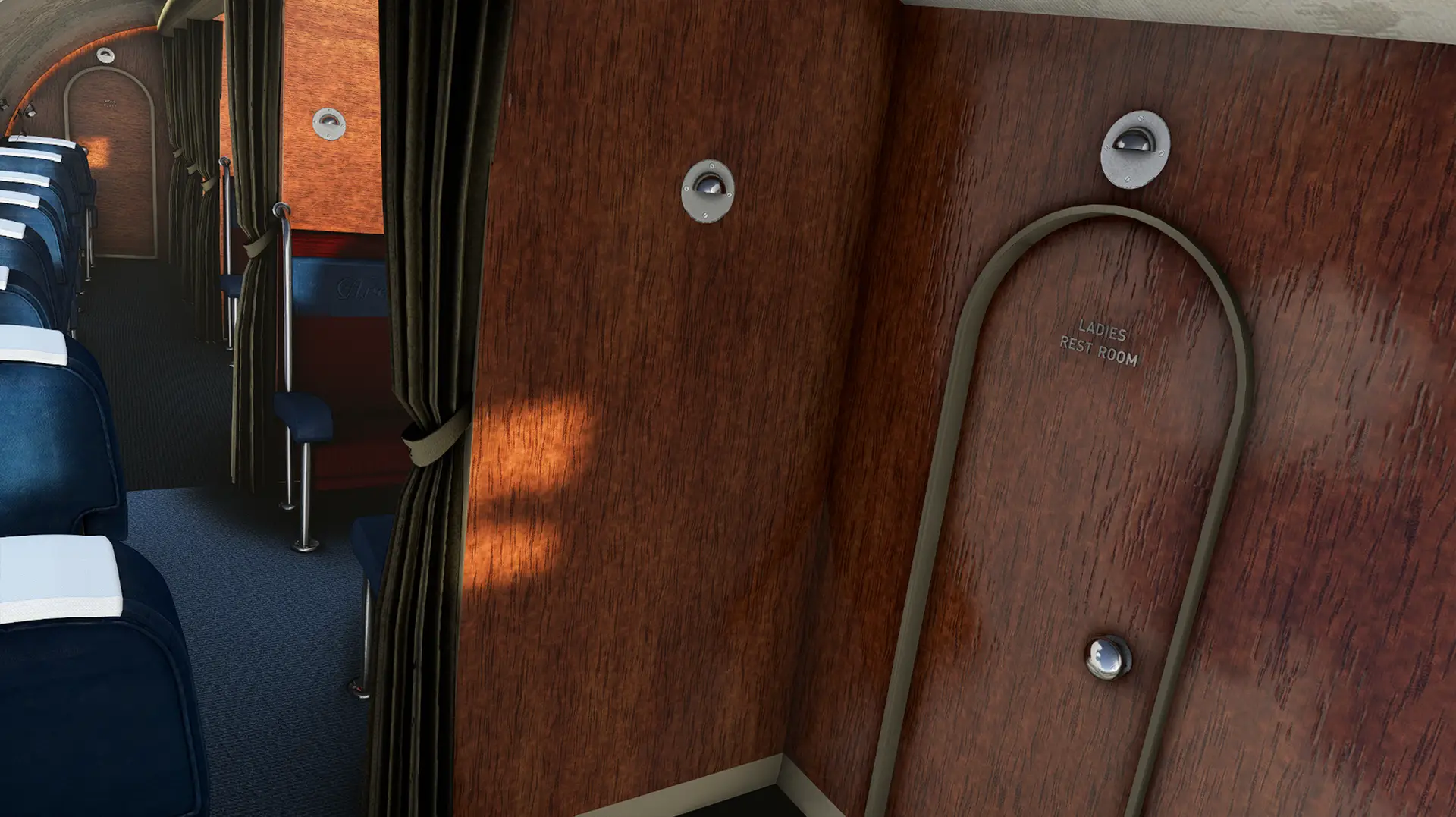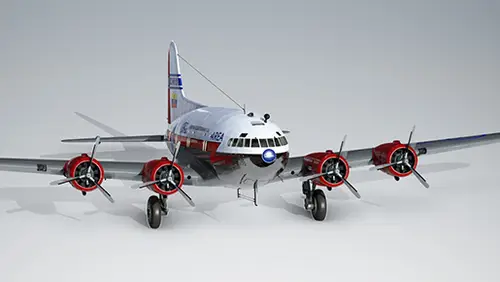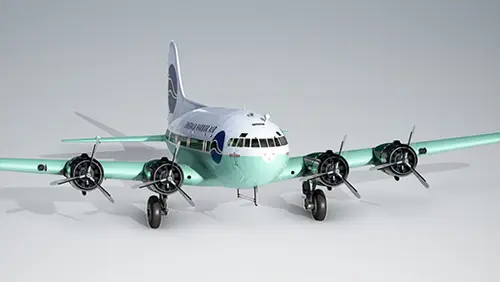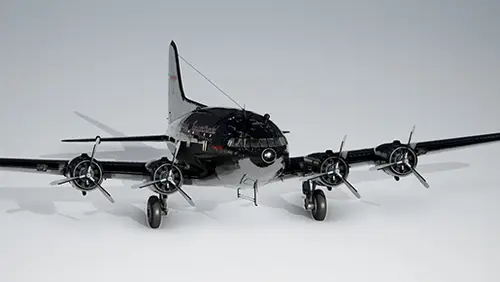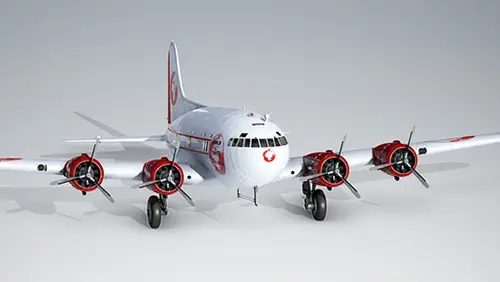The 307 Stratoliner is a 4-engine, long-range, high-altitude airliner produced by American aerospace manufacturer Boeing. The 307 was the first airliner that featured a pressurized cabin, which allowed it to operate up to 20,000 feet above sea level. The aircraft took its maiden flight on December 31, 1938 and was introduced on July 4, 1940. Boeing manufactured a total of 10 Stratoliners.
Boeing began development of the 307 in the mid 1930s in response to airline industry requests for an aircraft that could operate at altitudes above most inclement weather events and comfortably fly above passes of the Rocky Mountains. Engineers based the 307 on the company’s B-17C bomber due to its aerodynamic performance, notably its long-duration flight efficiency. Specifically, Boeing adopted the bomber’s wings, engines, engine configuration, empennage, and landing gear for the design. The notable difference from the B-17 was the fuselage. Boeing designed a circular cross-section body for the 307 with a maximum diameter of 138 inches (inner diameter), 11.5 feet. The circular design allowed the cabin to be pressurized to accommodate high altitude flight, and the large diameter allowed comfortable seating configurations.
Built primarily with aluminum alloy, the 307 utilized stressed-skin engineering, where the metal exterior works in concert with the aircraft’s frame for strength, flexibility, and to maintain pressurization at altitude. The 307 could carry up to 33 passengers and up to five crew. Crew included two pilots and a new type of aircraft personnel at the time, a flight engineer. The flight engineer in the 307 was responsible for technical aspects of the aircraft’s operation, including cabin pressurization, power settings, electrical components, and other systems.
The 307, which used engine-driven pumps to maintain cabin pressurization, could operate up to 20,000 feet above mean sea level while holding an interior pressure equivalent to that of 8,000 feet. Its name, a portmanteau of stratosphere and airliner, reflected its high-altitude operating nature. Its spacious cabin accommodated sleeper berths, a galley, a lavatory, and a dressing room in addition to comfortable reclining seats. The Stratoliner was emblematic of luxury travel, much in the spirit of ocean liner voyages, an atmosphere that airlines sought to mimic during this phase of the industry.
American industrialist Howard Hughes purchased the first 307 Stratoliner with the intention to use it to attempt aviation records. He ultimately converted it into a “flying penthouse.” Pan American Airlines (Pan Am) purchased three (each designated S-307) and Trans World Airlines (TWA) purchased five (each designated SA-307B). The Pan Am aircraft used Wright Cyclone engines with single-stage superchargers, and the TWA models used Pratt & Whitney powerplants with two-stage sequential superchargers. The five that TWA purchased were converted for military use in World War II. Operated by the United States Army Air Forces, these airframes used the C-75 designation. Through subsequent sales to airlines and governments, the 307 maintained an operational lineage until 1975, when the last one crashed.
Only one of the original ten Stratoliners has survived the years intact, a model originally flown by Pan Am named “Clipper Flying Cloud.” It was meticulously restored by 30 Boeing volunteers to original condition in the 1990s and flown from the Seattle area of Washington to the Washington, D.C. area and delivered to its permanent home at the Smithsonian’s Steven F. Udvar-Hazy Center.
The Boeing 307 Stratoliner measures 38 feet, 7 inches in length, stands 20 feet, 9 inches tall, and has a wingspan of 107 feet, 3 inches. It is powered by four Wright GR-1820-G102A Cyclone radial engines that produce up to 1,100 horsepower each and turn 3-blade constant speed propellers. The 307 has a range of 1,300 miles, a service ceiling of 23,800 feet above sea level, a cruise speed of 222 miles per hour, and a top speed of 250 mph.
